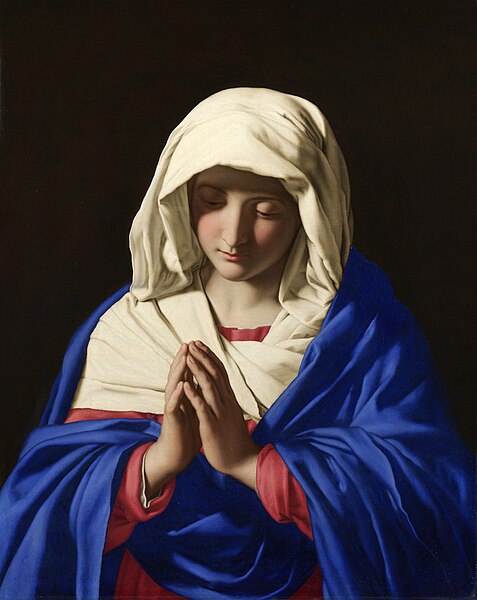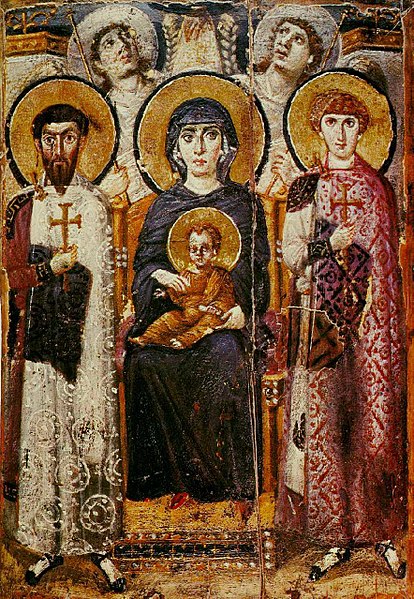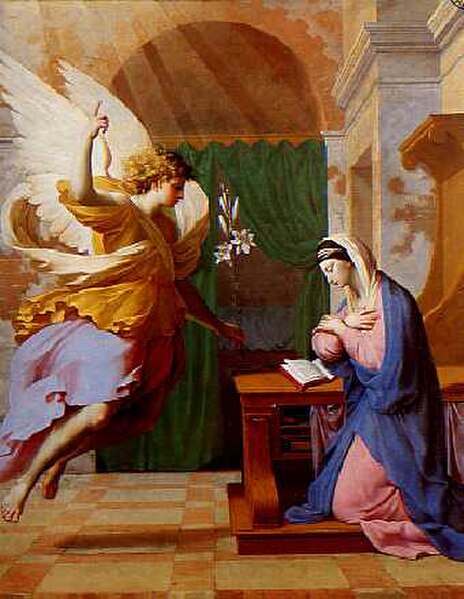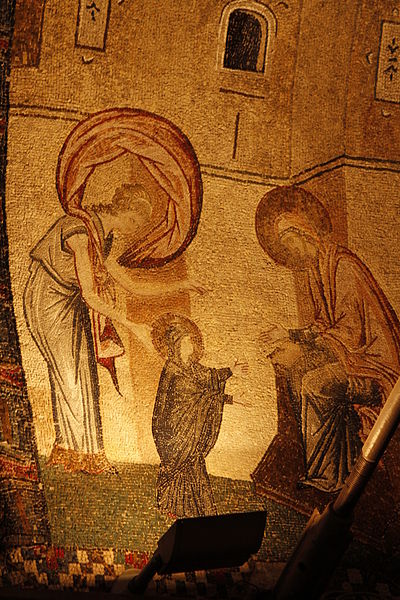The Magnificat is a canticle, also known as the Song of Mary, the Canticle of Mary and, in the Byzantine tradition, the Ode of the Theotokos. It is traditionally incorporated into the liturgical services of the Catholic Church, the Eastern Orthodox Church, Lutheran Churches and the Anglican Communion. Its name comes from the incipit of the Latin version of the text.
Visitation, by Domenico Ghirlandaio (1491), depicts Mary visiting her elderly cousin Elizabeth.
Translations of the Magnificat into various languages at the Church of the Visitation in Ein Karem
The Visitation in the Book of Hours of the Duc de Berry; the Magnificat in Latin
Mary was a first-century Jewish woman of Nazareth, the wife of Joseph and the mother of Jesus. She is a central figure of Christianity, venerated under various titles such as virgin or queen, many of them mentioned in the Litany of Loreto. The Eastern and Oriental Orthodox, Church of the East, Catholic, Anglican, and Lutheran churches believe that Mary, as mother of Jesus, is the Mother of God. Other Protestant views on Mary vary, with some holding her to have lesser status.
The Virgin in Prayer, by Sassoferrato, c. 1650
Virgin and Child with angels and Sts. George and Theodore. Icon, c. 600, from Saint Catherine's Monastery
The Annunciation by Eustache Le Sueur, an example of 17th century Marian art. The Angel Gabriel announces to Mary her pregnancy with Jesus and offers her white lilies.
The Virgin's first seven steps, mosaic from Chora Church, c. 12th century







